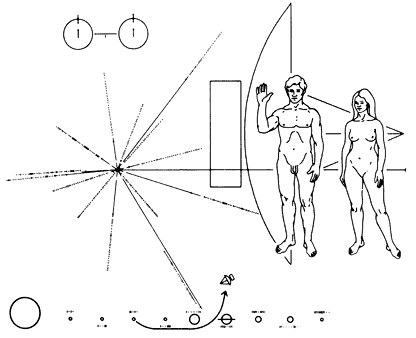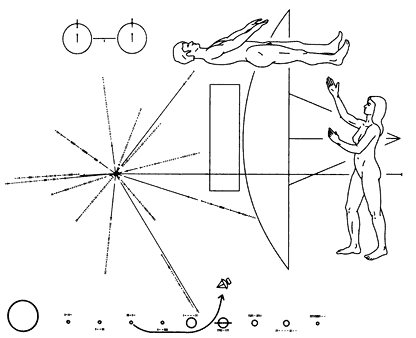The second in a two-part distillation of a cover story about NASA, politics, and the new power generation that I just finished for the LA Alternative. To get up to speed, see the previous entry.

The CEV -- Ares, or whatever -- is not the first attempt NASA has made to replace its Shuttle fleet with something more appealing to an electorate weaned on the Star Wars movies. The last ten years have seen a lot of blustery attempts at making a "Single Stage to Orbit" craft, that is to say, one which could be completely reusable and would not need expensive and heavy external fuel tanks. An SSTO, theoretically, would look less like a rocket, and more like a plane.
For some time, a Lockheed-Martin project called VentureStar looked to be the future of space travel: a reusable, at first unmanned, Space Plane capable of being launched at one tenth the cost of other systems. A literal plethora of other "X-Plane" prototypes, running the gamut from the very futuristic-sounding NASA X-30, a hypersonic scramjet that can combust conventional rocket fuel at super-sonic speeds, to the Roton SSTO, an aerospike space helicopter, have been pumped as Shuttle replacements. Even Boeing was designing a space plane.
Needless to say, all of these projects invariably ran out of suitable funds to be fully tested, let alone implemented. NASA's oft-heavily layered, procedure-oriented bureaucratic structure (which many critics argue inhibited necessary action in the case of the Columbia disaster) combined with a failing budget and a series of political scandals, hasn't exactly been loosening purse strings, especially not for highly volatile experimental craft. The Bush imperative, however, has re-allocated $11 billion of NASA's budget and wriggled $1 billion more out of Congress to develop an only partially reusable rocket that sticks to a 40 year-old model of aeronautic design.
Meanwhile, independent companies like Mojave-based Scaled Composites have successfully built and flown reusable, sub-orbital space planes. Their largest project, SpaceShipOne (largely funded by Microsoft mogul Paul Allen) set a number of significant firsts: it was the first privately funded aircraft to exceed Mach 2 and Mach 3, exceed 100km altitude and the first privately-funded reusable spacecraft. Incidentally, the Scaled Composites planes, largely designed by SC founder Burt Rutan, use a much safer fuel (rubber and nitrous oxide), are made of lighter materials, and are generally more environmentally friendly and cost-effective than anything NASA has ever done. Following this success, British tycoon Richard Branson has already funded SpaceShipTwo, which, although the cash-strapped Russians have been sending wealthy tourists into space since 1990, will soon send paying passengers into space as part of an enterprise called -- yeah, you guessed it, Virgin Galactic.
Around the time that NASA phases out the Shuttles, Roskosmos, the Russian space agency, will be premiering Kliper, its own version of a manned Space Plane craft. Designed primarily to replace the Russian equivalent of the Shuttle -- the Soyuz -- Kliper will be partly reusable and allegedly capable of gliding into Earth's atmosphere at a much less strenuous angle than the Soyuz currently does, and will (at least theoretically) be used in future lunar and Martian missions.
In light of this space plane free-for-all, it seems even more incomprehensible that NASA should buckle down to work on a craft whose design is purportedly very similar to that of the Apollo launchers. Sure, it's clear that the long reign of the Shuttle is over: fading public interest and the unprecedented rise of non-governmental space travel have irrecoverably tarnished the sex appeal of these dull, fuel-guzzling behemoths. Advances in robotics -- the very successful Mars rovers, for example -- have made huge and cost-effective advances in our knowledge of other planets, while all the Shuttle has had to show for itself recently is a fatal disaster and a ballooning budget. Retiring the Shuttle doesn't seem like a particularly revolutionary idea, nor does it seem like a bad one; but building a new Apollinian rocket? Going back to the moon? Now?
According to NASA, there are plenty of seemingly reasonable justifications for such an undertaking. For one, it would be more cost-efficient in the long run, as most of NASA's millions are sucked up by expensive Earthen rocket launches. Launching craft from a lunar base would require much less fuel, as the escape gravity of the moon is practically negligible. The moon, too, is an ideal site for radio astronomy; telescopes planted on its far side, safe from all the radio waves emitted by our noisy planet, will be able to see deeper into the cosmos. Minerals and ores (methane, for example) caking the moon's surface could be mined by enterprising new generations of astronauts and potentially converted into rocket fuel and as-yet-unknown useful materials. Its barren landscape would be ideal for testing new space technology or conducting experiments too biologically hazardous for Earth (!!!!!).
US astronaut Ed Lu, upon his return from a six-month stint as Science Officer of the International Space Station, wrote in his NASA blog that further manned explorations wouldn't be solely research-based; they would, rather, be "about opening up a new frontier for commerce, trade, and settlement, as well as doing science."
These as-yet-unknown avenues, the Bush Administration has emphasized, will stir the youth of America to pursue careers in science and industry, creating "a new [power] generation of innovators and pioneers."
America could ensure its technological prowess for generations to come! Sounds a little familiar, right?
I don't think anyone could be branded a pinko for saying that the 1969 moon landing came at a time when the US was desperately trying to prove its national superiority. The dominion over the cosmos reaped by this high-tech accomplishment was, as much as anything else, figurative. The moon landing, although an event of global significance, was a profoundly American moment -- a sort of Manifest Destiny over outer space, and a grand slam over the Soviets. We put an American flag on the surface of the moon, for crying out loud: a gesture with nothing but a symbolic purpose. To stray clear of a completely transparent bias, let's say nothing of the phallo-centrism of a rocket's blastoff.
In any case, albeit its outward rationality, a return to the moon engenders one benefit over all: it would remind the entire world that the US flag still juts out of the lunar surface. Of course, the space-scape has changed since 1969: the Soviets are Russians now (and, supposedly, our allies), no one's been to the moon since 1972, and the cosmos has gotten crowded.
A surprising multitude of other countries are now jumping on the space bandwagon. The Chinese, albeit hush-hush as all hell, have already sent people into space and are promising to be on the moon by 2024. Russia recently struck a $900 million defense deal with the Malaysian government in exchange for sending the first Malaysian crew of astronauts into orbit, who, incidentally, will be the first Muslims in space. The Indian lunar orbiter, Chandrayaan-1 (Sanskrit for, literally, "Moon Craft"), is going to be launched as soon as 2008, and the European Space Agency, with its expansive launch pad in French New Guinea, has plans to undertake manned lunar and Martian missions in the near future. Even South Africa, the site of many NASA satellite tracking bases, has developed a space policy under the presumption that South Africans are "highly dependent" on outer space.
What used to be the sole dominion of the US and the USSR is now being overrun by ambitious international projects and independent, non-governmental commercial space enterprises whose designs and sheer ardor are marking a sea change in the way space travel works. The abstract idea that the US is no longer a space superpower, that NASA's 1969 moon feat is not a big enough placeholder to keep us at the top of the ranks, is becoming more and more concrete.
It doesn't seem surprising, then, that the Bush administration would pick this moment -- we are, after all, in the middle of a very sticky and expensive war -- to premiere a space program that conjures up the peak of this country's cosmic imperial power.
Over 40 years ago, President John F. Kennedy addressed a stadium of 35,000 Houstonians at Rice University and made his now-famous pronouncement that there would be a man on the moon within the decade. 'This country of the United States was not built by those who waited and rested and wished to look behind them,' he said. 'This country was conquered by those who moved forward--and so will space.' What Kennedy meant was that the US was going to conquer the moon in the same way that it conquered the West: absolutely, and without the company of any other major powers. This colonial rhetoric (earlier in the speech, he evoked William Bradford, the Plymouth Bay colony, and the dominion of US satellite technology over that of the Soviets, all in the same breath) was particularly effective in rallying the support of not only that stadium at Rice University, but of the entire country.
Whoever wrote George Bush's 2004 speech clearly did their homework: this problematic but viciously intelligent oratory begins with an allusion to the "spirit of discovery" instilled in this country by Lewis and Clark.
This mimicry of John F. Kennedy may or may not be intentional. Nonetheless, the two speeches are kin in their call to arms, and the way they evoke great former explorers in order to justify future, and seemingly pretty arbitrary, conquests. The Kennedy project, however, was single-minded in a way that made it effective, the catalyst of a potent historical symbol. Whether or not the new Vision for Space Exploration will follow in the jet-trails of the legacy it has angled itself toward remains to be seen. What is certain, however, is that this most recent Shuttle voyage marks the end of an important era of space travel.
Hopefully, in this new venture towards the moon, we can retain an understanding of the elegance and awe space exploration can arouse internationally. Although we are easily bogged down by the complexity of life on Earth -- by war, compassion, politics, and borders, -- we must never forget, either, the powerful humility we gain from seeing our tiny planet floating alone in the darkness of the cosmos. It reminds us that, after all, we all live on the same little rock floating through space, regardless of our self-imposed notions of country. This kind of global perspective holds the power to wither all wars, to render redundant all politics.
There is a beautiful paradox inherent in space travel. We audaciously shoot rockets into space partially because we are motivated by a desire for power and technological dominance, or, as is the case with NASA now, to evoke the halcyon days of the Apollo program. However, this same cocksure action can cave in on itself, causing a supernova of a surprising result: it can teach us the value of wonder, and the substance of humility.


Houston, we have a pizza.
Very rad read. Any tips for good info on the CEV/Ares?
captivating, truly.